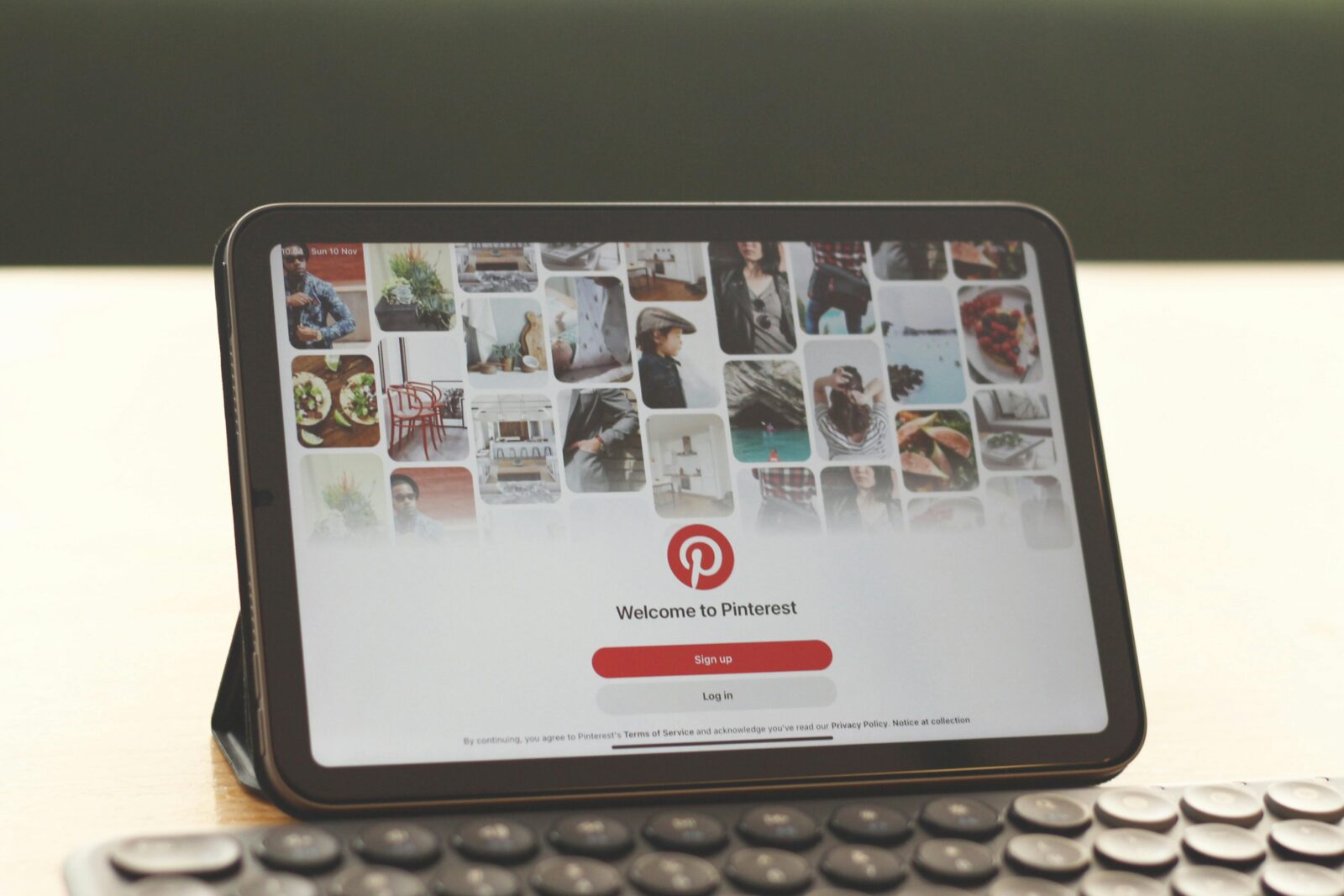Hey there! So you’ve been scrolling through Pinterest, saving recipes and home décor ideas, and suddenly it hits you: “Wait… can I actually make money from this?”
The answer is a resounding YES! And I’m going to show you exactly how.
I’ve spent years exploring different ways to monetize Pinterest, and let me tell you—it’s one of the most underrated platforms for making money online. Unlike Instagram or TikTok where you need thousands of followers to see any income, Pinterest works differently. It’s a visual search engine, which means your content can reach people (and make you money) even if you’re just starting out.
Ready to turn those pins into profit? Let’s dive into the five best ways to make money on Pinterest.
1. Affiliate Marketing (My Personal Favorite!)
This is hands-down the easiest way to start making money on Pinterest, and you don’t need your own products.
Here’s how it works: You join affiliate programs (like Amazon Associates, ShareASale, or RewardStyle), get unique tracking links for products you love, and share those links on Pinterest. When someone clicks your link and makes a purchase, you earn a commission. Simple as that.
How I’d approach this:
Start by thinking about what you’re already interested in. Love home organization? Pin products from The Container Store. Into fitness? Share your favorite workout gear. The key is authenticity—only promote products you’d genuinely recommend to a friend.
Create pins that solve problems. Instead of just pinning a product image, make a pin titled “5 Kitchen Gadgets That Actually Save Time” and link to your blog post or directly to affiliate products (Pinterest allows this!). People searching for solutions will find your pins, click through, and boom—you’re earning commissions while you sleep.
Pro tip: Always disclose your affiliate relationships. It’s not just ethical—it’s required by law. A simple “This post contains affiliate links” does the trick.
The long-term potential of affiliate marketing on Pinterest:
What makes affiliate marketing so powerful on Pinterest is the compound effect over time. Unlike social media posts that disappear from feeds within hours, your pins can continue generating clicks and commissions for months or even years after you create them. I’ve watched single pins bring in steady income for over two years without any additional work. The secret is understanding Pinterest SEO—using the right keywords in your pin titles, descriptions, and boards so people can actually find your content when they’re searching. Once you master this, you’re essentially building passive income streams that work for you 24/7. Plus, as you create more pins and test different products, you’ll start to see patterns in what your audience responds to, allowing you to double down on what works and scale your earnings significantly.
2. Drive Traffic to Your Blog or Website

If you have (or want to start) a blog, Pinterest is your new best friend. It’s like free advertising that works around the clock.
I think of Pinterest as a massive highway that leads people straight to your content. And once they’re on your blog, you can monetize through ads (Google AdSense, Mediavine), sponsored posts, or selling your own products.
Here’s what works:
Create eye-catching pins for every blog post you write. I’m talking bright colors, clear text overlays, and titles that make people think “I NEED to know this!” For example, if you write a post about budgeting, your pin might say “How I Saved $10,000 in One Year (Without Feeling Deprived).”
The beauty of Pinterest is that one pin can drive traffic for months or even years. I’ve had pins from three years ago still bringing in hundreds of visitors every month. That’s passive traffic working for you!
Why Pinterest beats other traffic sources:
When you compare Pinterest to other social media platforms, the difference is night and day. On Facebook or Instagram, you’re competing with friends, family, and entertainment content—people aren’t necessarily in “learning” or “buying” mode. But Pinterest users come with intent. They’re actively searching for solutions, ideas, and information they can use right now. This means the traffic you get from Pinterest is incredibly high-quality and much more likely to take action on your blog—whether that’s clicking your affiliate links, signing up for your email list, or buying your products. Additionally, you don’t need a huge following to see results. I’ve seen brand-new bloggers with zero followers get thousands of pageviews simply because they optimized their pins for search. It’s all about creating content that answers the questions people are already typing into Pinterest’s search bar.
3. Sell Your Own Products or Services

Got something to sell? Pinterest wants to help you sell it.
Whether you’re an Etsy shop owner, a freelance designer, a coach, or you sell digital products like printables or courses, Pinterest is an incredible platform for reaching buyers who are actively looking for what you offer.
Think about it: people go to Pinterest with intention. They’re planning weddings, decorating nurseries, looking for business tools. They’re in a buying mindset, which makes them much more likely to convert than on other social platforms.
What I recommend:
Use Rich Pins (specifically Product Pins) to showcase your items. These pins automatically update pricing and availability, making it super easy for people to buy from you.
Create pins that show your products in action. If you sell planners, don’t just photograph the cover—show how someone’s using it to organize their life. Tell a story that helps people visualize themselves using your product.
How to optimize your product strategy on Pinterest:
The key to successfully selling on Pinterest is understanding that you’re not just competing on price—you’re competing on inspiration and aspiration. Your pins need to show people the transformation or lifestyle your product enables, not just the product itself. For example, if you sell handmade candles, don’t just pin a photo of the candle. Create pins showing a cozy reading nook with your candle, a relaxing bath scene, or a beautifully set dinner table—and include your candle as part of that aspirational image. Use seasonal strategies too. Start pinning your Valentine’s Day products in December, your Mother’s Day items in February, and your Christmas offerings in September. Pinterest users plan ahead, and the algorithm favors early content. Also, don’t underestimate the power of video pins showing your product being used or unboxed—these tend to get significantly higher engagement and can dramatically increase your conversion rates.
4. Become a Pinterest Virtual Assistant

Okay, this one’s a bit different because you’re not making money FROM Pinterest—you’re making money BY managing Pinterest for others.
Seriously, businesses are desperately looking for people who understand Pinterest strategy. If you can create pins, schedule content, and grow an account, you can charge anywhere from $500 to $3,000+ per month per client.
How to get started:
Learn the platform inside and out. Take a course or watch YouTube tutorials on Pinterest strategy. Practice on your own account first so you can show results.
Then reach out to small business owners, bloggers, and online shops. Trust me, most of them know they should be on Pinterest but don’t have the time or knowledge to do it effectively. You’re solving a real problem for them.
The best part? You can manage multiple clients at once since Pinterest is mostly about planning and scheduling content in advance.
Building a sustainable Pinterest VA business:
What I love about the Pinterest VA route is that it’s one of the most scalable side hustles out there. Once you develop your systems and workflows, you can realistically manage 5-10 clients simultaneously while working just 15-20 hours per week. The secret is batching your work—dedicate specific days to creating pins, other days to scheduling, and set up templates that make your design process lightning-fast. Many successful Pinterest VAs start by offering basic management packages (like creating and scheduling 20 pins per month) and then upsell additional services like Pinterest ad management, analytics reporting, or full Pinterest audits. You can also niche down to become the go-to Pinterest expert for a specific industry—wedding planners, real estate agents, health coaches, or e-commerce shops. This specialization allows you to charge premium rates because you deeply understand that industry’s audience and what converts. Plus, many VAs eventually transition this into a full-time business or even an agency where they hire other VAs to work under them.
5. Partner with Brands for Sponsored Content
Once you’ve built up your Pinterest presence, brands might actually pay you to create pins promoting their products or services.
I’ll be honest—this takes more time to build up to than affiliate marketing. You’ll typically need a decent following and good engagement metrics. But when you get there? It’s incredibly rewarding.
Here’s what brands look for:
They want to see that you have an engaged audience and that your content aligns with their brand values. Start by creating amazing content in your niche, growing your monthly viewers, and building a cohesive Pinterest aesthetic.
When you’re ready, create a media kit showing your stats (monthly viewers, engagement rates, demographics) and reach out to brands you love. You can also join influencer networks like AspireIQ or Collective Voice that connect creators with brands.
Maximizing your sponsored content opportunities:
The sponsored content game on Pinterest is different from other platforms, and understanding this difference is crucial. Brands are willing to pay more for Pinterest collaborations because the content has a longer lifespan and continues driving traffic long after the campaign ends—unlike an Instagram story that disappears in 24 hours. To position yourself for brand deals, focus on building your monthly viewers count (this is more important than follower count on Pinterest) and maintaining strong engagement rates. Start by creating case studies of your most successful pins so you can show brands exactly what kind of results they can expect. Don’t wait for brands to come to you—be proactive. Identify brands whose products you already use and love, then reach out with a personalized pitch explaining why your audience would resonate with their products and what kind of campaign you envision. Many creators successfully negotiate ongoing partnerships or ambassador roles that provide steady monthly income, and some sponsored pins can pay anywhere from $200 to $5,000+ depending on your reach and niche. The key is proving that you can deliver not just impressions, but actual clicks and conversions.
Relate Post: 10 Easy Side Hustles You Can Start This Week With No Experience
Here’s the thing about making money on Pinterest: it’s not a get-rich-quick scheme. It takes consistency, patience, and a willingness to learn what works for your specific niche.
But the potential is absolutely real. I’ve seen people go from zero to thousands of dollars a month by treating Pinterest like the powerful marketing tool it is.
Start with one method—I recommend affiliate marketing since it’s the easiest entry point—and build from there. Create quality pins, focus on helping your audience solve problems, and stay consistent.
Pinterest rewards quality content that actually helps people, so keep that at the center of everything you do. The money will follow when you provide real value.
What are you waiting for? Your Pinterest money-making journey starts now! Pick one method from this list and take action today. Your future self (and bank account) will thank you.
Got questions about any of these methods? Drop them in the comments—I love helping people succeed on Pinterest!







You can have anything you want in life if you dress for it.